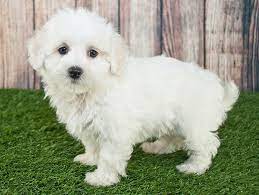Are Korean corn dogs actually Korean? Corn dogs (called “hot dogs” in Korea) are believed to have arrived on Korea’s shores in the 1980s. Despite its longtime status as a street food here, a recent resurgence thanks to creative designs and concoctions has restored the popularity of corn dogs in the country.
What are Korean corn dogs made of? Korean corn dogs are made from either sausage, mozzarella cheese, or a combination of the two. You will skewer and coat this in a sweet flour batter before rolling in a layer of toppings. What is this? Common topping choices include panko breadcrumbs, french fries, cornflakes, and even ramen noodles!
Why is it called two hands corn dog?
What is a Seoul corn dog? The Korean corn dog, also known as the gamja hot dog, is a filling street dish found in Seoul’s streets and night markets. You might have recognized it because of K-dramas, movies, and Youtube videos. The classic Korean corn dogs are hot dogs coated with a chewy and thick batter made of rice flour instead of corn.
Are Korean corn dogs actually Korean? – Additional Questions
What do Korean corn dogs taste like?
They’re sweet and salty and completely delicious. Some Korean hotdogs are made with a yeasted batter and some are made with a rice flour batter.
What are Korean hot dogs called?
In Korean we call this a gamja-hotdog. “Hotdog” because in Korea the American-style hot dog of a wiener in a bun is not usual. Our “hotdogs” are on sticks coated with batter and deep fried, similar to what Americans call a “corn dog” but without the cornmeal batter.
Where did Korean corn dogs originate?
Caption Options. Corn dogs gained popularity as a Korean street food in the 1980s, but the current corn dog trend—which sees more than just hot dogs coated in more than just cornmeal batter—is generally credited to Myungrang Hot Dog, a chain that started in a market near Busan in 2016.
What is Kogo in Korean?
Called a Kogo or Potato Dog, it’s a hot dog on a stick that is coated in tiny pieces of fried potato.
How many calories are in a Korean cheese corn dog?
How many calories is in a Korean corn dog? 1 serving weighs 114.9 grams and contains 177.4 calories.
When did corn come to Korea?
Maize has been cultivated throughout the Korean peninsula since the middle of the 16th century1.
Why is Korean corn different?
Among the different types of yellow-colored corn, a major one is sweet corn alias sugar corn, literally translated into satang oksusu (사탕옥수수) in Korean. Sweet corn not only has a higher sugar content and thus tastes sweeter than other kinds of corn, but it is harvested immaturely! In other words, it is actually unripe!
Why is corn dog so popular?
“The reason for its popularity [is] its competitive price, delicious taste, [customizable options], and its availability to be a meal instead of being just a snack.” Two-Hands took that popularity and opened its first store in November 2019.
What was the original corn called?
mays, from Spanish: maíz after Taino: mahiz), also known as corn (North American and Australian English), is a cereal grain first domesticated by indigenous peoples in southern Mexico about 10,000 years ago.
| Maize |
| Family: |
Poaceae |
| Subfamily: |
Panicoideae |
| Genus: |
Zea |
| Species: |
Z. mays |
Can corn exist without humans?
It is very unlikely that corn would exist, as we know it today, without human help. While you may think that plants humans grow for food are always pretty dependent on human hands for their survival and reproduction, many of these plants could happily live back in the wild.
Is corn a man made vegetable?
It is a human invention, a plant that does not exist naturally in the wild. It can only survive if planted and protected by humans. Scientists believe people living in central Mexico developed corn at least 7000 years ago. It was started from a wild grass called teosinte.
Did Romans eat corn?
The word “corn” also referred to grain, but not as the corn (maize) known today. Romans ate: wheat. barley.
Is bread free in Rome?
The city of Rome imported all the grain consumed by its population, estimated to number 1,000,000 by the 2nd century AD. An important part of this was the grain dole or corn dole, a government program which gave out free or subsidized grain, and later bread, to about 200,000 of Rome’s adult male citizens.
Was there corn in Europe before America?
“Before 1492, tomatoes, potatoes, wild rice, salmon, pumpkins, peanuts, bison, chocolate, vanilla, blueberries and corn, among other foods, were unknown in Europe, Africa and Asia.
How did Rome feed itself?
Grains, especially baked into bread, were the staple of the Roman diet, providing 70 to 80 percent of the calories in an average diet. Barley was also grown extensively, dominating grain production in Greece and on poorer soils where it was more productive than wheat.
Did Romans eat onions?
Roman soldiers ate Garlic and Onions to give them strength. In fact the Roman’s would plant fields of Garlic in conquered territories, perhaps to symbolize their dominance. In the middle-ages, Onions were so important that they could be used to pay ones’ rent or given as gifts.
What was the big meal of the day for the Romans?
The Romans generally ate one main meal (the cena) a day, around sunset. Originally this was eaten around midday, preceded by a light meal, often just a piece of bread, early in the morning. This was called ientaculum (or breakfast). Supper or vesperna was a smaller meal in the evening.
